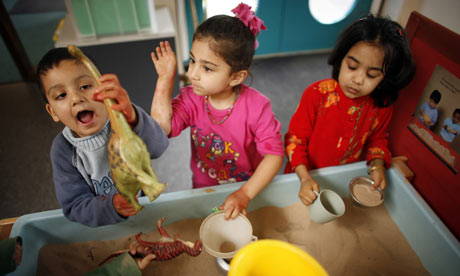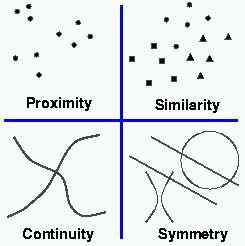Dr. D. Dutta Roy, Ph.D.
Psychology Research Unit
Indian Statistical Institute
Kolkata - 700108
Lecture given at the certificate course students of Performing Art Therapy Centre, RBU dated 7.12.2012.
Reader is requested to make comment on the article.
Q1. What is psychotherapy ?
The term psychotherapy refers to the treatment of psychological disorders through the use of psychological methods rather than physical means like drugs or surgery.
Verbal communication between therapist and client is the most significant element of psychotherapy. It can be carried out individually or in groups. It is concerned with the evaluation of problems and possible solutions as well as with the encouragement of more adaptive ways of thinking and behaving.
Q2. What are the main models of psychotherapy?
Psychodynamic
Behaviour therapy
Existential
Gestalt
Rational emotive therapy
Transactional analysis
Rabindrik psychotherapy
Q3. What is Rabindrik Psychotherapy ? How does it differ from other therapies ?
Rabindrik psychotherapy refers to the way of self-awakening through the use of therapeautic postulates extracted from the literary works of Rabindranath Tagore. It can be used for treatment of psychological disorders. Postulate refers to theoretical assumption. Theory is composed of postulate.
Here, therapist acts as facilitator. Therapist creates the environment through performing arts of Tagore that leads client to understand own conflict and its management. Both verbal and non-verbal communication between therapist and the client are followed. Therapist must have adequate knowledge about therapeautic postulates extracted from the literary works of Rabindranath Tagore.
Q4. What are the similarities and dissimilarities between Rabindrik psychotherapy and other therapies?
All psychotherapies aim at treatment of psychological disorders. But Rabindrik psychotherapy does not accept labeling one as suffering from psychological disorders.
In other therapy, like psychoanalysis, mind is divided into three layers as unconscious, pre and conscious. Rabindrik psychotherpy is concerned with consciousness experience only. Consciousness is classified into three layers as murta, raaga and saraswat.
Verbal communication between therapist and client is the most significant element of psychotherapy.This is followed in Rabindrik psychothrapy. In Rabindrik approach, performing art or non-verabal communication can be used.
Like other therapies, Rabindrik psychotherapy can be administered indiviually or in group.
Other therapies are concerned with the evaluation of problems and possible solutions as well as with the encouragement of more adaptive ways of thinking and behaving. On the other hand, Rabindrik psychotherapy is concerned with self-evaluation and possible solutions to overcome the conflict of layer dynamics.
Q5.What is postulate? Write about few postulates of Rabidrik psychotherpapy.
Postulate is the basic assumption of theory. Any theory is composed of several postulates. Few postulates of Rabidrik psychotherpapy are:
- Do not label rather understand other’s consciousness.
- Consciousness is free floating. Look at it as detached being.
- Make the consciousness unbounded and experience it.
Experience of consciousness is like a journey from incomplete to complete across its layers– Murta, Raaga and Saraswat. - Man is the pursuer of completeness and newness.
- Searching newness makes man incomplete that acts as the drive to find out completeness. Incomplete to complete is a cycling process.
Here are few songs in Bengali and in English (translated by me)related to postulates
Do not label rather understand other’s consciousness.
"Je tore pagol bole tare tui bolis ne kichu.
Ajke tore kemon vebe ange je tor dhulo debe
Kal se prate mala hate asbe re tor pichu pichu.
Ajke apan maner vare thak se bose gadir pare
Kalke preme asbe neme, karbe se tar matha nichu."
English:
Do not say anything when one calls on you mad
Assuming you as abnormal, one can throw dust on you today.
Tomorrow he will come to you with garland
Today, due to self-pride, he sits on high chair.
Tomorrow, he will get down and bow his head.
Consciousness is free floating. Look at it as detached being.
"Je ami bhese chale kaler dheue akash tale ori pane dekhchi ami cheye. …… o je sachal chabir mato ami nirab kabir mato- ori pane dekhchi ami cheye. Ei je ami oi ami noi, apan-majhe apni je roi,
Jai na bhese marandhara beye-
Mukto ami, tripto ami, shanto ami, dipto ami, ori pane dekhchi ami cheye.”
English
The ‘I’ that floats on the waves of time under the sky, I am watching at it. …..That ‘I’ moves like moving picture and I am watching at it as silent poet. This ‘I’ is not that ‘I’. I am within me. I am not floating like dead. I am free, satisfied, peaceful and lighted. I am watching at it.
Ei akashe amar mukti aloy aloy
Q6.Is therapeautic assessment important in Rabindrik psychotherapy?
In Rabindrik psychotherapy, therapeutic assessment is important to find out one’s mental state's position across three layers of consciousness. This helps the therapist in comprehending individual’s characteristics, reasons for present behaviour and in predicting one’s future psychological functioning or behaviour.
Q7.What is consciousness? Why is it imporant to study?
Consciousness is the immediate awareness of thoughts, sensations, memories, and the world around us. Experience of consciousness varies from moment to moment. Just like a river, it is changing. Individual’s behaviour is guided by his or her mental state position and its flow at the different layers of consciousness. Understanding about one’s state at the different layers of consciousness and its flowing pattern is prelude of Rabindrik psychotherapy.
Q8. What are changes taken place across three layers of consciousness ?
Consciousness experience varies with mental state position across layers of consciousness. These three layers are Murta, Raaga and Saraswat. When our mental state lies at the layer of murta, we are aware of morphology or the structural properties of the object in our surroundings. When our mental state lies at the layer of raaga, we associate morphology of the object with feeling of pleasantness or unpleasantness. This provides some meaning about object. And finally, when our mental state is in the saraswat layer, we experience harmony between the object and the environment. In this layer, our own existence is mixed with the surroundings. But such experience does not happen in murta and raaga layer.
Q9. What are the characteristics of three layers ?
Characteristics of three layers are given below:
Murta (The outer layer) : What we sense through our five sensory organs.
Raaga (The inner layer) : The meaning carried by the sensory stimuli. It is attached with affect or feeling of pleasant or unpleasantness. When perception is attached with affect, it is called apperception.
Saraswat layer (The inner core) : The feeling of harmony, the existence of truth, the feeling of white.
Q10. How does performing art help in assessment?
By using performing art, one can diagnose extent of malfunctions in the consciousness, locate one’s mental state across layers of consciousness, estimate possible flow of mental functions across layers. After taking case history and mental state examination, therapist will explore modes of performing arts to assess consciousness layers.
Q11. What are the approaches of therapy?
There are different approaches to administer performing art for assessing layers of consciousness.
a) Altered state of consciousness: It differs from normal waking consciousness. In this state, consciousness is split into two simultaneous streams of mental activity. One stream of mental activity remains conscious. But a second stream of mental activity-the one responding to the performing art is dissociated from awareness. This state is almost similar to hypnotic state. In hypnosis, suggestion is given by therapist. But in using performing art, client gets suggestion from the art itself.
b) Projecttion : In projection, individual projects own desires, feelings, needs etc. on the works of Rabindranath Tagore.
c) Self-report: Analysis of one's self-report about matching between own feeling and feeling of different characters of works of Rabindranath Tagore.



_2839.jpg) Individual fails to put the blocks in the hole according to the size and shape. This suggests impairment in perception.
Individual fails to put the blocks in the hole according to the size and shape. This suggests impairment in perception.







